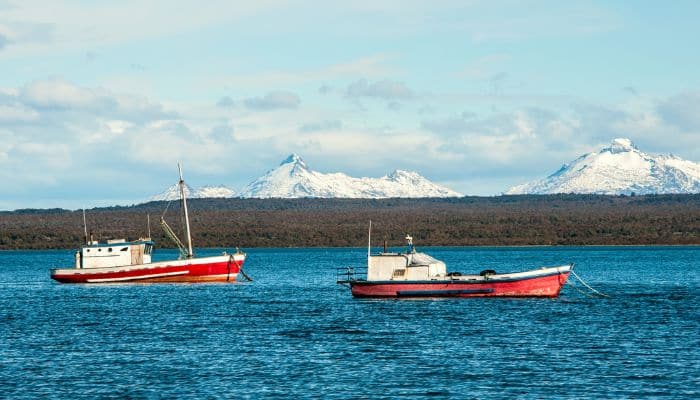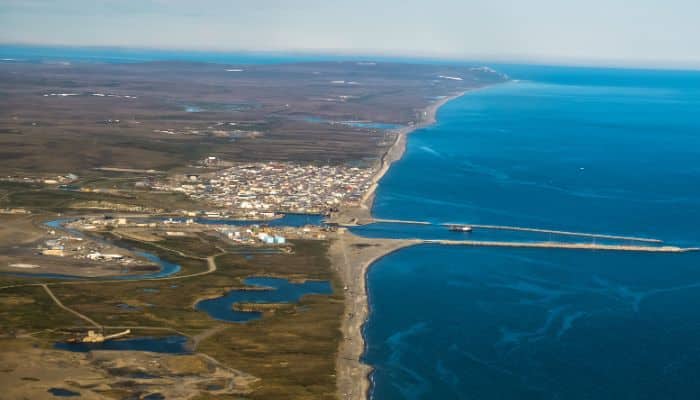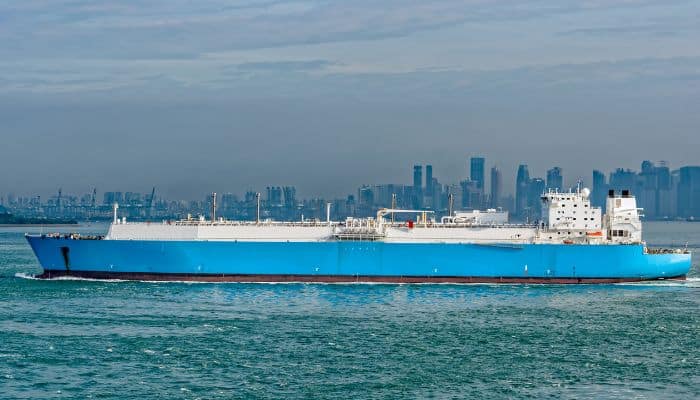10 Biggest Straits Of The World
The world’s biggest straits are like intricate waterways woven by natural forces on the earth’s canvas. Straits propel global maritime trade, foster diplomatic ties and shape the destiny of economies.
Not only do they connect distant nations through trade, they facilitate the movement of ideas and foster cultural exchanges apart from just transporting goods and services.
By definition, a strait is just a narrow passage of water that connects two larger water bodies, like a sea or ocean, but it is more than a mere geographical entity. It has a broader role and importance in the present times.
Some straits are maritime chokepoints, and several nations wish to establish their dominance over them, something that has always been attempted in the past as well when powerful navies of Europe fought to colonise the world by employing warships in strategically essential waterways.
Read along as we navigate through the 10 Biggest Straits of the World.
1. Malacca Strait
The 800 km long and 65-250 km wide Malacca Strait runs from the Malay Peninsula to Sumatra in Indonesia. It is a vital waterway which connects the Indian Ocean with the Pacific Ocean.
It was named after the Malacca Sultanate that ruled over the region around the 1400s and 1500s, whose administrative centre was in present-day Malacca in Malaysia.

From a strategic angle, the Malacca Strait is vital since it connects Asian economies with the rest of the world. Per reports, the waterway handles around 60% of global maritime transport.
It is also a part of the maritime Silk Road, and over 100,000 ships pass through it annually, carrying 25% of the globally traded goods like oil, coal, palm oil, Indonesian coffee and other Chinese manufactured items.
The Malacca Strait faced threats from pirates in the early 2000s; however, pirate attacks have now dropped to zero. It is also a site of many shipwrecks; at least 34 are recorded in different parts of the strait.
2. Bosphorus Strait
This narrowest strait in the world is vital for international trade and navigation. Bosphorus Strait connects the Black Sea with the Sea of Marmara.
It is 31 km long with a width varying between 730-3300 m and is 30-120 m deep. Popularly referred to as Bogazici in Turkish, it also separates Europe from Asia.

Bosphorus Strait was once a river valley drowned by the powerful seawater at the end of the Tertiary period.
This busy waterway is crossed by cargo ships, oil tankers, fishing vessels and passenger boats. Its current flows in a north-to-south direction. Also, the presence of a subsurface countercurrent produces swirls and eddies, making navigation at specific points in the strait quite difficult and dangerous for the inexperienced.
The coast of the Bosphorus Strait was lined with small villages since the Byzantine era. These grew into towns and then later suburbs but retained their identities. For instance, Arnavutkoy was famous for its strawberries, while Cengelkoy for its fresh cucumbers.
3. Strait of Hormuz
The Hormuz Strait lies between the Persian Gulf and the Gulf of Oman in the Arabian Sea.
It offers the only sea passage from the Persian Gulf to the open ocean and is a key maritime chokepoint separating Iran and the Arabian Peninsula.

The Hormuz Strait is 167 km long, with a width varying from 96 km to 39 km. Its waters have a maximum depth of 200 m.
The strait’s importance can be gauged from the fact that it is the fastest route for oil transportation to other nations like India from the Middle East region.
A third of the world’s LNG and 25% of total global oil consumption passes through the Hormuz Strait.
It has been a busy waterway for centuries as its hinterlands were brimming with luxurious trade items with no easy access to trading ports. Babur, the founder of the Mughal Empire in the Indian Subcontinent, recounts in his memoirs how almonds were carried from Ferghana to Hormuz before they could be made available in worldwide markets.
4. Strait of Gibraltar
A narrow waterway connecting the Atlantic Ocean to the Mediterranean Sea, the Strait of Gibraltar also separates Europe from Africa. It lies in the territorial waters of Spain, Morocco and the British Overseas Territory of Gibraltar.
Both continents are distinguished by 13 km of ocean at the narrowest point of the strait between Spain’s Point Marroqui and Morocco’s Point Cires. Ferries traverse the two continents daily in less than 40 minutes.

It has a minimum width of 13 km and a maximum depth of 900 m.
Per the UN Convention on the Law of the Sea, foreign ships and aircraft can cross the strategic strait in case of continuous transit.
BirldLife International has identified it as an Important Bird Area as thousands of seabirds, like Balearic shearwaters, black-backed gulls, Atlantic Puffins, etc., use the strait to migrate between the Mediterranean and the Atlantic.
5. Magellan Strait
The Magellan Strait is a maritime gateway in southern Chile that separates the South American Mainland towards the north and Tierra del Fuego towards the south.
This passage between the Atlantic and the Pacific Oceans was once traversed by indigenous people in their rudimentary canoes. In 1520, Ferdinand Magellan arrived here with his Spanish expedition, becoming the first European to find it. Hence, the strait was named to honour him.

Magellan Strait is a perilous route as it narrows down at many points and has strong winds and currents, making piloting compulsory.
Magellan Strait is around 570 km long and 2 km broad at its narrowest point. There are 41 lighthouses in the waterway, of which some are over a century old and some are national monuments.
A few notable ones are the County of Peebles Hulk, the first 4-masted iron hull full-rigged vessel used as a breakwater at Punta Arenas, the Evangelistas Lighthouse and the San Isidro Lighthouse, which is now a museum and a lodge.
6. Bering Strait
The Bering Strait separates Russia’s Chukchi Peninsula from Alaska’s Seaward Peninsula. It is the only waterway between the cold Arctic and the Pacific Ocean.
It connects the Arctic Ocean with the Bering Sea and separates the Asian and North American continents.

Its average depth is 30-50 m, and the strait is 85 km wide at its narrowest. Several islands, like the 2 Diomede Islands and St. Lawrence Island, lie in the strait.
Its coasts are sparsely populated by the Inuit, Chukchi and Yupik people, who have lived in the harsh climate and terrain for hundreds of years.
It was Vitus Bering’s expedition to the Bering Strait and Alaska that led to the Russian foothold in North America. Also, during the Cold War, the Bering Strait acted as a border between the US and the Soviet Union.
7. Bab-El-Mandeb Strait
The Bab-El-Mandeb Strait lies between Yemen on the peninsula of Arabia, Djibouti and Eritrea in the horn of Africa. It links the Red Sea to the Gulf of Aden.
Its name means the Gate of Tears in Arabic, possibly due to the dangers of navigation.

According to an Arab legend, several people drowned in an earthquake in the region that separated the Arabian peninsula from the Horn of Africa. Hence, the Strait has been called the Gate of Grief due to this tragedy, per many.
The Bab-El-Mandeb strait is a key gateway between the Indian Ocean and the Mediterranean Sea through the Red Sea and the Suez Canal.
It is 50 km long, 26 km wide and has an average depth of 186 m. Hundreds of vessels pass through this vital maritime gateway. However, most are oil tankers.
8. Bass Strait
The Bass Strait separates Tasmania from mainland Australia. It is the direct passage between the Great Australian Bight and the Tasman Sea and the only shipping route into Port Philip Bay.
It was formed eight thousand years ago as sea levels rose at the end of the last glacial period.

The 500 km long and 350 km broad strait was named after George Bass, an English explorer.
The strait has a maximum depth of 155 m and an average depth of 60 m. It is difficult to navigate; however, it was vital since it offered a passage for vessels headed from Europe or India to Sydney in the 19th century. It also saved around 1300 kilometres on the voyage.
More than 50 islands are situated in the Bass Strait, including King Island, Hunter Island, Robbins Island and Three Hummock Island. Several oil and gas fields are present in the eastern part of the Bass Strait.
9. Lombok Strait
A strait of the Bali Sea, linking it to the Indian Ocean, the Lombok Strait is the deepest strait in the world, between the Indonesian islands of Bali and Lombok.
It is 60 km long and 40 km wide, with an average depth of 250 m. The strait’s narrowest point has a width of only 20 km and is situated in the middle of the waterway between Lombok and Nusa Penida islands.

It is one of the major passages for the Indonesian Throughflow that circulates water between the Indian and Pacific Oceans.
The coral reefs of this strait have been found to be one of the world’s most diverse and productive ecosystems. Stony corals, soft corals, sponges, and forams offer shelter and protection to small fish, shrimps, snails and other organisms.
It is also home to some of the rare marine organisms and endangered ones like whales and dolphins.
Lombak Strait is a major contributor to the Indonesian Economy and also those of other Southeast Asian countries surrounding it. It is a vital trade route along the Strait of Malacca and has transformed Lombak Island into a major tourism destination.
10. Singapore Strait
Lying between the Malacca Strait and the South China Sea, this 113 km long and 19 km wide strait offers a deepwater passage to the Singapore Port, which makes it one of the busiest straits in the world.
Around 50% of all global seaborne trade and one-third of the crude oil in the world passes through this strategic strait, making it one of the most important shipping lanes in the world.

It also functions as a lifeline for Japan, as over 80% of its oil imports pass through it.
The strait has the Keppel Harbour and other small islands. Around 2000 ships cross its waters every day.
It finds mention in historical records and travel accounts dating back to as early as the 9th century.
Today, it is a piracy-prone area, and recently, four armed robbery incidents were reported from this waterway, where bulk carriers were attacked and their engine spares were stolen.
Conclusion
Straits are vital gateways on which international shipping and trade is dependent. They allow the movement of goods and people by offering a shorter and more direct route between places of production and markets.
They shape and reshape economies and boost tourism potential since many are home to diverse and unique underwater ecosystems.
They also reduce shipping costs and time and make shipping efficient and cost-effective. Straits are maritime chokepoints, and people, since the beginning of trade, have tried to control them to assert their dominance in the region concerned, which shows their geo-political importance.
You might also like to read-
- 10 Major Straits Of Asia
- 10 Best Great Lakes Ship Tracker Tools
- 10 Gulf of Martaban Facts You Might Not Know
- 12 Gulf Of Mannar Facts You Might Not Know
- 10 Celtic Sea Facts You Should Know
- 9 Interesting West Philippine Sea Facts You Must Know
- 13 Gulf Of Riga Facts You Must Know
Disclaimer :
The information contained in this website is for general information purposes only. While we endeavour to keep the information up to date and correct, we make no representations or warranties of any kind, express or implied, about the completeness, accuracy, reliability, suitability or availability with respect to the website or the information, products, services, or related graphics contained on the website for any purpose. Any reliance you place on such information is therefore strictly at your own risk.
In no event will we be liable for any loss or damage including without limitation, indirect or consequential loss or damage, or any loss or damage whatsoever arising from loss of data or profits arising out of, or in connection with, the use of this website.
Do you have info to share with us ? Suggest a correction
Disclaimer :
The information contained in this website is for general information purposes only. While we endeavour to keep the information up to date and correct, we make no representations or warranties of any kind, express or implied, about the completeness, accuracy, reliability, suitability or availability with respect to the website or the information, products, services, or related graphics contained on the website for any purpose. Any reliance you place on such information is therefore strictly at your own risk.
In no event will we be liable for any loss or damage including without limitation, indirect or consequential loss or damage, or any loss or damage whatsoever arising from loss of data or profits arising out of, or in connection with, the use of this website.

About Author
Zahra is an alumna of Miranda House, University of Delhi. She is an avid writer, possessing immaculate research and editing skills. Author of several academic papers, she has also worked as a freelance writer, producing many technical, creative and marketing pieces. A true aesthete at heart, she loves books a little more than anything else.
Latest Maritime Knowledge Articles You Would Like:
Subscribe To Our Newsletters
By subscribing, you agree to our Privacy Policy and may receive occasional deal communications; you can unsubscribe anytime.















